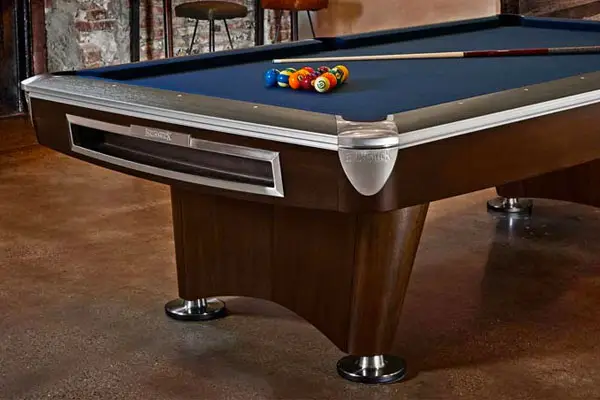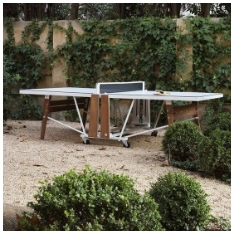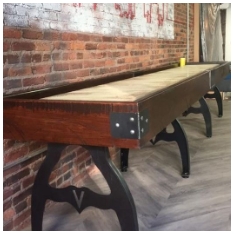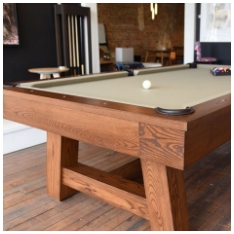Understanding the language of pool is essential for anyone stepping into the game. Whether you’re playing casually at home or watching professionals, a solid grasp of common pool terms helps you enjoy the experience more fully. This article covers essential pool terms and billiard terminology for beginners, giving you a strong foundation for learning the game.
Basic Pool Table Terminology
Before diving into gameplay, it's helpful to get familiar with the layout and parts of a pool table.
Table Components
- Rails: The cushioned edges around the playing surface.
- Pockets: There are six pockets on a pool table—four corner pockets and two side pockets.
- Cloth: Often called felt, it’s the fabric covering the playing surface.
- Cue Ball: The white ball that players strike with the cue stick.
- Object Balls: The numbered balls (1–15 in standard games) that players aim to pocket.
Markings and Equipment
- Spot: A marked location on the table where the balls are racked or placed during specific shots.
- Foot Spot: The spot where the apex ball of the rack is placed.
- Head String: The line behind which the cue ball must be placed for the break.
- Cue Stick: The stick players use to hit the cue ball.

Game Play Terms
Understanding gameplay-related terminology is key to following the rules and strategies of various pool games.
Break
- Break Shot: The opening shot that starts the game, usually aimed at spreading the racked balls.
- Scratch on the Break: When the cue ball is pocketed during the break, resulting in a foul.
Shots
- Bank Shot: A shot where the object ball is aimed to bounce off one or more rails before being pocketed.
- Combination Shot: A shot where the cue ball hits one object ball, which then strikes another ball.
- Jump Shot: A shot where the cue ball is made to jump over an obstructing ball to strike a target ball.
- Masse Shot: An advanced shot where the cue ball curves due to extreme spin applied by the cue stick.
Player Actions and Fouls
This section explains what players can and cannot do during a game.
Legal vs. Foul Shots
- Legal Shot: A shot where the cue ball first contacts an intended object ball and either pockets a ball or drives a ball to a rail.
- Foul: A violation of rules such as failing to hit any ball, hitting the wrong ball first, or pocketing the cue ball.
Common Fouls
- Scratch: When the cue ball is pocketed. This typically results in ball-in-hand for the opponent.
- Double Hit: When the cue stick contacts the cue ball more than once in a single stroke.
- Push Shot: An illegal shot where the cue stick stays in contact with the cue ball for too long.

Game Formats and Variants
Pool and billiards feature several popular game formats, each with specific rules and objectives.
Eight-Ball
- Played with 15 object balls.
- One player must pocket solids (1–7) and the other stripes (9–15).
- The 8-ball must be pocketed last to win.
Nine-Ball
- Played with balls numbered 1 through 9.
- Players must always hit the lowest-numbered ball on the table first.
- The game is won by legally pocketing the 9-ball.
Straight Pool
- Also known as 14.1 Continuous.
- Players can shoot at any object ball.
- Points are scored for each successful pocketed ball.
Strategy and Positioning
Understanding terminology related to shot planning and table control improves your gameplay.
Cue Ball Control
- English (Spin): Side spin applied to the cue ball to influence its direction after contact.
- Follow: When the cue ball continues forward after hitting an object ball, caused by hitting the cue ball above center.
- Draw: The cue ball comes back toward the player after contact, achieved by hitting below center.
Position Play
- Shape: The positioning of the cue ball after a shot to allow an easy next shot.
- Safety: A defensive shot aimed at leaving the opponent with no clear shot.
Why Learn Pool Terms Early?
Familiarity with pool terms and billiard terminology for beginners helps eliminate confusion and speeds up learning. Whether you’re joining a league or playing casually, clear communication makes for a more enjoyable experience and smoother gameplay.
Conclusion
Learning the language of pool may seem like a lot at first, but taking the time to understand basic pool terms and billiard terminology for beginners will build your confidence at the table. With a stronger grasp of rules, shots, equipment, and gameplay formats, you’ll not only improve faster but also communicate better with other players. Use this glossary as a foundation, and with consistent practice, the terms will become second nature.





